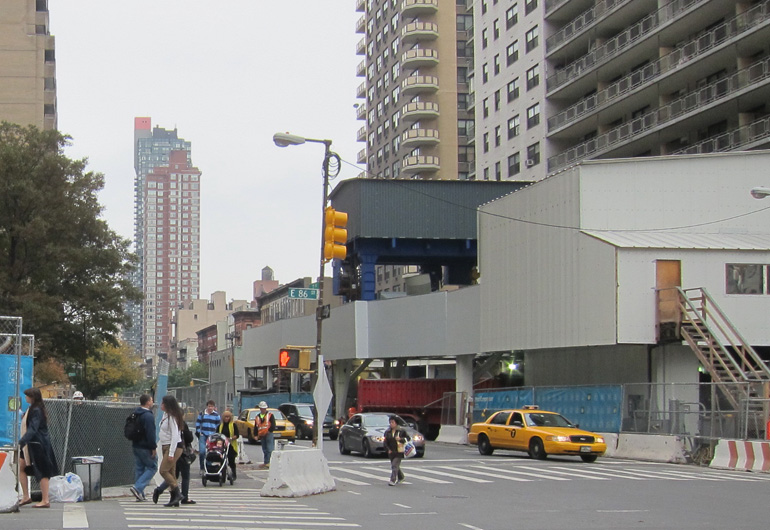Gotham Diary:
Defending Freedom
18 December 2012
One of the fascinating things about Frances FitzGerald’s America Revised is her tour of the various editions of a history text, aimed at seventh- and eight-graders, written by Ralph Henry Gabriel and Mabel Casner and originally published in 1931 as Exploring American History. She traces the text’s rightward drift through five editions, culminating in 1955.
Later on in the book, the authors fulfill their promise by giving an account of Soviet institutions. In this section, one is told that “Russia” is a police state, where “the leader of the Communist party has absolute power over … every person.” (The book cautiously does not name this leader; Stalin had died two years before publication.) Russia, one learns, is a “fake democracy” and a “fake republic”; worse yet, its industry is geared not to the production of television sets but to war production. In addition, one learns that Russia is tremendously powerful — perhaps even more powerful than the United States, because, in spite of all the American aid to free nations, Russia has managed to block progress and block the growth of prosperity. It is now threatening the free world. […] Internationally, nothing is safe from the Communists, and the home front is not very secure, either. The United States may be a free country, with “wonderful machines” and a free-enterprise system (over which the government now presides in t much reduced capacity of referee), but the Russsians are in the process of undermining it. They have already stolen American state secrets through Alger Hiss andd the Rosenbergs. They lie a lot, and the Communist Party in the United States espouses violent, undemocratic means. The book therefore approves of the Internal Security Act, the Loyalty Board, and the firm hand of J Edgar Hoover and the FBI.
Is it any wonder that a generation, fed this malarkey, developed a taste for guns?
I wish that I could remember more reliably my impressions at the time — not as early as 1955, perhaps, but certainly by 1960 — for I do know that I was aware of a discrepancy between reality and the party line (the American patriotic line) before I got to high school. As FitzGerald writes in a nearby passage, history books did not discuss money or business or manufacturing in any detail. This originally reflected a progressive distaste for big business; Mugwumps like David Savile Muzzey (whose long-popular textbook also gets detailed coverage in America Revised) identified with the professional ascendancy that resented being trumped by the merely rich. But the evasion grew more determined as candor became problematic. (How to acknowledge that some people were poor so that others could be rich?) For my part, I was surrounded by money and businessmen, but factories were far away. We were taken on tours at the Coca-Cola bottling plant in Tuckahoe and at Pepperidge Farm in Norwalk, but both of these installations, as I recall, showcased automation. The “workers” weren’t doing much of anything beyond watching the machines. We were not taken on a tour of the big GM factory in Tarrytown. The only workers I ever saw were janitors and construction gangs.
And what was this much-vaunted “freedom,” anyway? What I remember most about the three years that I attended Bronxville School is the insistence with which teachers urged us to resist conformity. Without preaching open rebellion, they chided us for our fads — fads in thinking just as fads in dress. They were genuinely worried that we would be crushed by conformity; it was assumed that grownups who weren’t teachers were zombies. (Our teachers were very highly paid, by the standards of the time.) Wondering why every grown man wore more or less the same suit and tie, we refused to tuck in our shirts and we stopped wearing socks. All (or most) of us. We didn’t have freedom. We had opportunities, and we were bound to take them as best we could.

